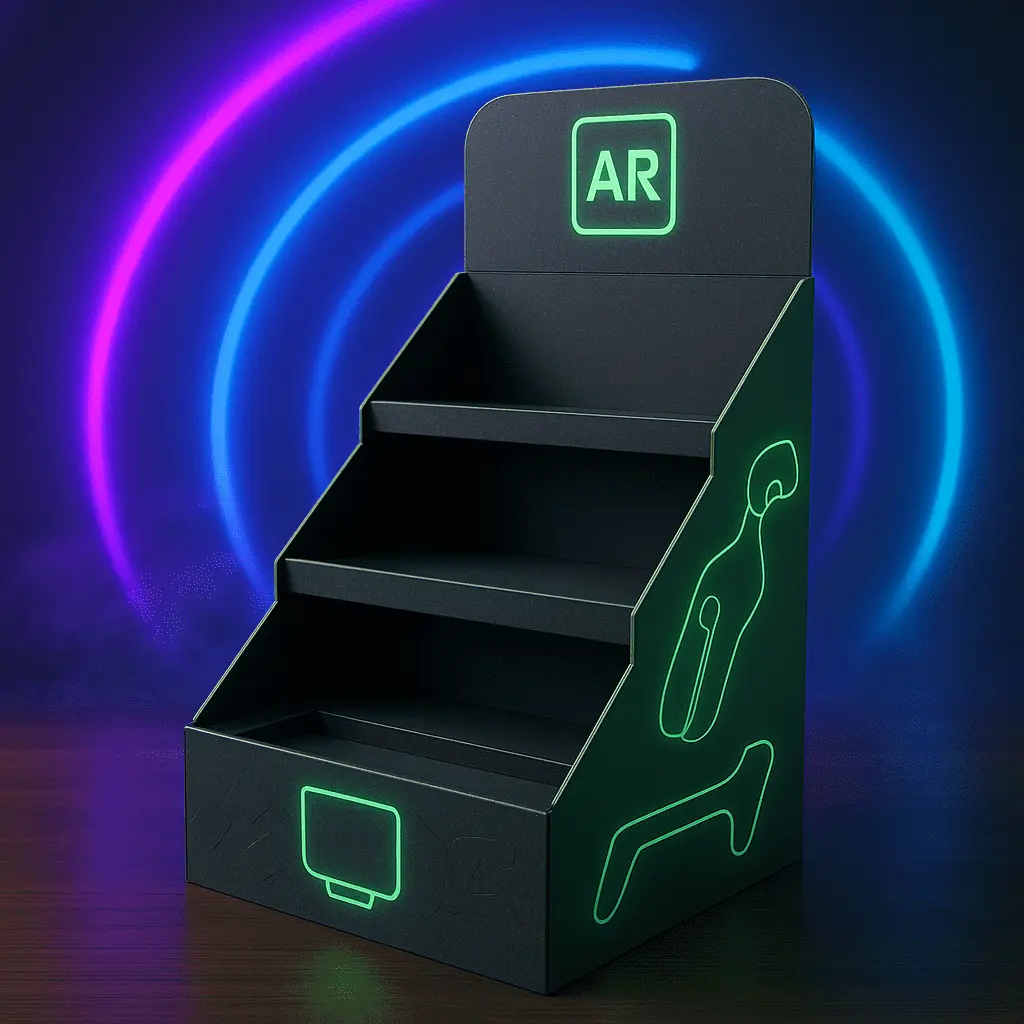6 PDQ Display Metrics Every Buyer Should Track
When it comes to point-of-purchase marketing, PDQ displays are indispensable tools for capturing consumer attention and driving sales. To maximize the effectiveness of these displays, buyers must monitor key performance indicators. The six essential PDQ display metrics every buyer should track are: sales lift, conversion rate, dwell time, units per transaction, return on investment (ROI), and inventory turnover. By closely monitoring these metrics, buyers can optimize their PDQ display strategies, enhance product visibility, and ultimately boost their bottom line. Understanding these crucial measurements allows for data-driven decisions that can significantly impact the success of in-store promotions and product placements.

Understanding the Importance of PDQ Display Metrics
The Role of PDQ Displays in Retail Strategy
PDQ displays, short for "Pretty Darn Quick," are pivotal in retail environments. These versatile merchandising solutions offer a rapid setup process, making them ideal for seasonal promotions, new product launches, or high-volume sales periods. Their ability to catch the shopper's eye and facilitate impulse purchases makes them a cornerstone of effective in-store marketing strategies.
PDQ displays come in various forms, from countertop units to floor-standing configurations, each designed to showcase products in an appealing and accessible manner. By strategically placing these displays in high-traffic areas, retailers can significantly enhance product visibility and encourage customer engagement. The adaptability of PDQ displays allows for seamless integration with existing store layouts, providing a flexible solution for diverse retail environments.
The Impact of Data-Driven Decision Making in Retail
In the competitive retail landscape, data-driven decision making has become paramount. By leveraging analytics and key performance indicators (KPIs), retailers can gain valuable insights into consumer behavior, optimize their marketing efforts, and allocate resources more effectively. This approach extends to the realm of PDQ displays, where tracking specific metrics can illuminate the effectiveness of different display strategies and inform future planning.
Data-driven decisions enable retailers to move beyond intuition and guesswork, basing their choices on concrete evidence of what works and what doesn't. This methodology not only improves the efficiency of PDQ display implementation but also contributes to overall store performance and customer satisfaction. By embracing a data-centric approach, retailers can continually refine their PDQ display tactics to align with evolving consumer preferences and market trends.
The Connection Between PDQ Displays and Consumer Behavior
PDQ displays serve as powerful influencers of consumer behavior within the retail environment. These strategically placed units can disrupt shopping patterns, drawing attention to specific products and encouraging unplanned purchases. Understanding the psychological impact of PDQ displays on shoppers is crucial for maximizing their effectiveness and driving sales.
Research has shown that well-designed PDQ displays can trigger emotional responses in consumers, creating a sense of urgency or desire that prompts immediate action. By analyzing consumer interactions with these displays, retailers can gain insights into shopper preferences, decision-making processes, and the factors that motivate purchases. This knowledge allows for the creation of more targeted and compelling PDQ display strategies that resonate with the intended audience and drive conversions.
Exploring the Six Essential PDQ Display Metrics
Sales Lift: Measuring the Direct Impact on Revenue
Sales lift is a critical metric that quantifies the increase in sales attributable to the implementation of a PDQ display. This measurement provides a clear indication of the display's effectiveness in driving additional revenue. To calculate sales lift, retailers compare the sales performance of products featured in PDQ displays against their baseline sales or the performance of similar products not utilizing such displays.
Tracking sales lift allows buyers to assess the immediate impact of their PDQ display investments and make informed decisions about future display strategies. A significant sales lift suggests that the display is effectively capturing consumer attention and influencing purchasing decisions. Conversely, a minimal lift may indicate the need for adjustments in display design, placement, or product selection to improve performance.
Conversion Rate: From Browsing to Buying
The conversion rate metric measures the percentage of customers who make a purchase after interacting with a PDQ display. This crucial indicator helps retailers understand how effectively their displays are turning browsers into buyers. A high conversion rate signifies that the display is not only attracting attention but also compelling customers to take action.
To calculate the conversion rate, divide the number of purchases made from the PDQ display by the total number of customer interactions with the display. This metric can be further refined by tracking conversions for specific time periods or comparing rates across different product categories. By analyzing conversion rates, buyers can identify which PDQ display strategies are most successful in driving sales and adjust their approaches accordingly.
Dwell Time: Engaging Customers for Longer
Dwell time refers to the duration customers spend interacting with a PDQ display. This metric is valuable for understanding how effectively a display captures and maintains consumer attention. Longer dwell times often correlate with increased likelihood of purchase, as customers who spend more time examining products are typically more engaged and interested.
Measuring dwell time can be accomplished through various methods, including observational studies, video analytics, or sensor technologies. By analyzing this data, retailers can gain insights into which elements of their PDQ displays are most captivating and identify opportunities for improvement. Optimizing displays to encourage longer dwell times can lead to higher engagement rates and, ultimately, increased sales.
Leveraging PDQ Display Metrics for Business Growth
Units Per Transaction: Boosting Average Order Value
The units per transaction metric measures the average number of items purchased by customers who interact with a PDQ display. This indicator is particularly valuable for assessing the effectiveness of cross-selling and upselling strategies implemented through display design. A higher units per transaction value suggests that the PDQ display is successfully encouraging customers to purchase multiple items, thereby increasing the average order value.
To optimize this metric, buyers should focus on creating PDQ displays that showcase complementary products or offer attractive bundle deals. By strategically grouping related items and highlighting their combined value, retailers can entice customers to add more products to their carts. Regularly analyzing and adjusting product combinations based on performance data can lead to continuous improvement in units per transaction.
Return on Investment (ROI): Ensuring Profitable Display Strategies
Return on Investment (ROI) is a crucial metric for evaluating the financial effectiveness of PDQ display initiatives. This measurement compares the costs associated with implementing and maintaining the display against the additional revenue generated. A positive ROI indicates that the display is not only driving sales but doing so in a cost-effective manner.
To calculate ROI for PDQ displays, buyers must consider various factors, including the cost of display materials, setup and maintenance expenses, and any promotional discounts offered. This figure is then compared to the incremental revenue attributable to the display. By consistently tracking ROI across different display strategies, retailers can identify the most profitable approaches and allocate resources more effectively, ensuring that their PDQ display investments yield maximum returns.
Inventory Turnover: Optimizing Stock Management
Inventory turnover is a vital metric that measures how quickly products featured in PDQ displays are sold and replenished. This indicator helps retailers maintain optimal stock levels, prevent stockouts, and minimize the risk of overstocking. A high inventory turnover rate suggests that the PDQ display is effectively moving products, while a low rate may indicate issues with product selection, pricing, or display placement.
To improve inventory turnover, buyers should closely monitor sales data and adjust stock levels accordingly. Implementing just-in-time inventory practices for PDQ displays can help maintain a balance between product availability and storage costs. Additionally, analyzing turnover rates can inform decisions about product rotation, allowing retailers to keep their displays fresh and aligned with current consumer demands.
Conclusion
Tracking these six essential PDQ display metrics empowers buyers to make data-driven decisions that optimize their retail strategies. By closely monitoring sales lift, conversion rates, dwell time, units per transaction, ROI, and inventory turnover, retailers can fine-tune their displays for maximum impact. These insights enable the creation of more engaging, profitable, and efficient PDQ displays that resonate with customers and drive business growth. As the retail landscape continues to evolve, leveraging these metrics will be crucial for staying competitive and meeting the ever-changing needs of consumers.
Contact Us
Ready to elevate your PDQ display strategy? Contact Guangzhou Huadu Fetching Color Printing and Packaging Co., Ltd. for expert guidance and innovative packaging solutions. Email us at support@fetchingprinting.com to start optimizing your retail displays today!
References
1. Johnson, M. (2022). "The Impact of Point-of-Purchase Displays on Consumer Behavior: A Comprehensive Analysis"
2. Smith, A. & Brown, L. (2023). "Metrics that Matter: Measuring Retail Display Effectiveness in the Digital Age"
3. Lee, S. (2021). "PDQ Displays: Revolutionizing In-Store Marketing Strategies"
4. Wilson, R. (2023). "Data-Driven Retail: Leveraging Analytics for Improved Display Performance"
5. Chen, Y. & Davis, K. (2022). "The Psychology of Impulse Purchases: How PDQ Displays Influence Shopper Decisions"
6. Thompson, E. (2023). "Optimizing Retail Spaces: A Guide to Effective PDQ Display Implementation"




